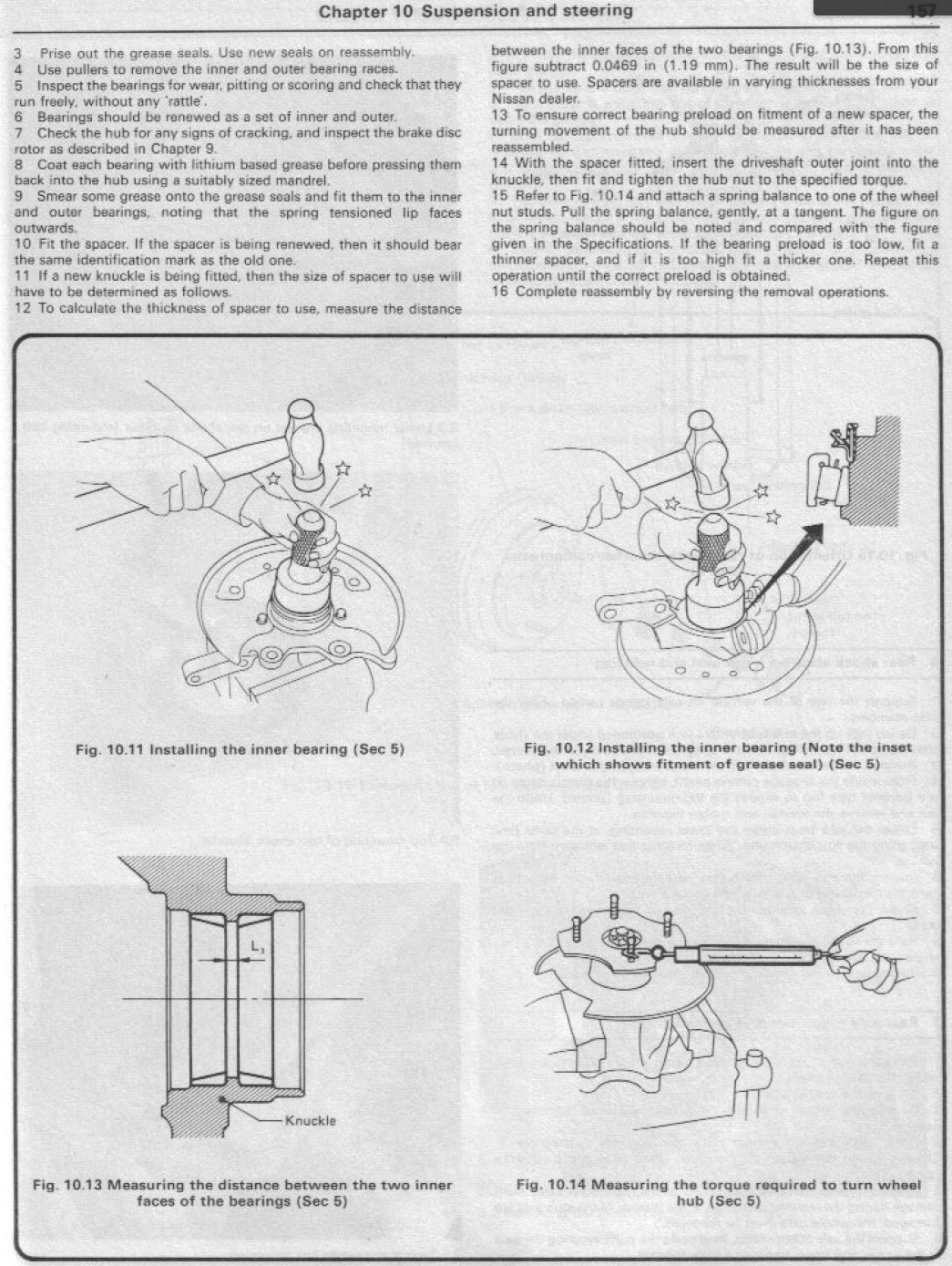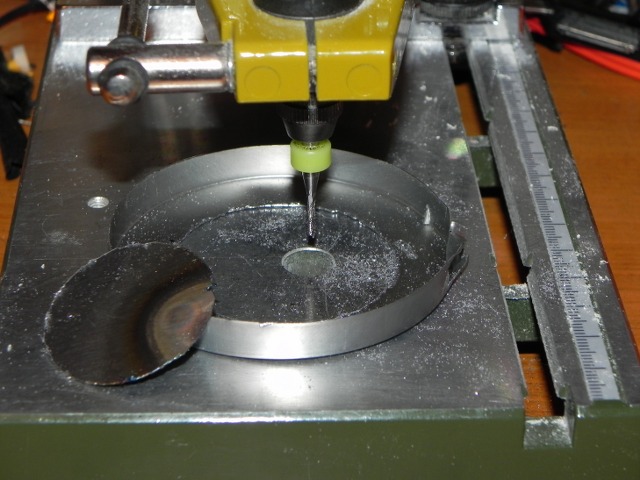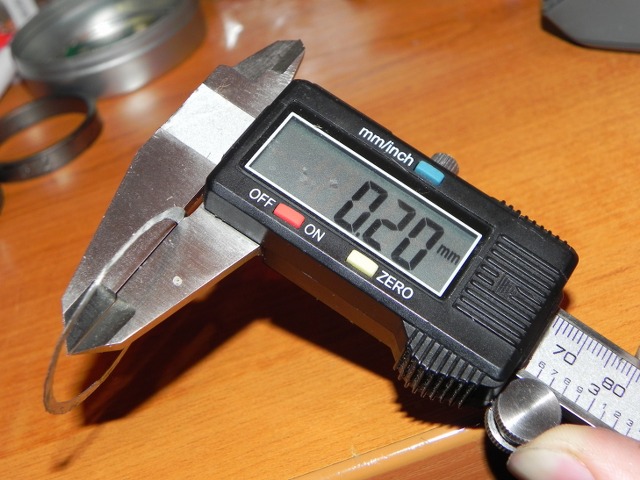Hi there.
During past few days I've noticed whirring sound coming from front right wheel, in speeds higher than 15 mph. I supposed, that it wasn't the CV-joint, because it should click (not whirr) in hard turns (and it did, but only slightly).
Yesterday I bought and replaced the CV-joint, to finally get rid of the clicking sound. There was some hope it will remove the whirring, but of course it did not. The bearings were the next suspect.
Today I removed the whole assembly, separated the wheel hub from the knuckle and looked at the bearings. The inner bearing (closer to engine) was covered with orange substance - it must have got wet somehow. Unfortunately, the knuckle is damaged too - the surface where miniature rollers on bearing touch it is quite heavily pitted on 25 percent of the total area - see the photo for better idea.


If you would be so kind and answer a few of my questions:
1 - I have some high-strength liquid metal epoxy on hand and succesfully repaired some heavy scratches on bike fork, right where the bushings slide. Do you think it would be possible to repair the pitted surface? (Of course it probably won't last 10000+ miles, but at least few thousand would be nice.)
2 - It is quite hard to find a replacement knuckle here (Slovakia). I've found one seller on UK eBay, but he is not willing to send it to Slovakia and I can't contact him via eBay Messages (he disabled it :/). Also, the shipping cost would probably be quite massive. However, I've found some threads (one of them) where it is mentioned, that it is possible to use parts from other models ("wishbones and spindle-knuckle (?) from K11, hubs from Sunny.") So, the question is - is it possible to use knuckle from K11 or Sunny (non-ABS of course)? They look quite similar on pictures. What about other models? What about combinations (need to replace knuckle+hub+wishbone etc...)
Thanks a lot
During past few days I've noticed whirring sound coming from front right wheel, in speeds higher than 15 mph. I supposed, that it wasn't the CV-joint, because it should click (not whirr) in hard turns (and it did, but only slightly).
Yesterday I bought and replaced the CV-joint, to finally get rid of the clicking sound. There was some hope it will remove the whirring, but of course it did not. The bearings were the next suspect.
Today I removed the whole assembly, separated the wheel hub from the knuckle and looked at the bearings. The inner bearing (closer to engine) was covered with orange substance - it must have got wet somehow. Unfortunately, the knuckle is damaged too - the surface where miniature rollers on bearing touch it is quite heavily pitted on 25 percent of the total area - see the photo for better idea.
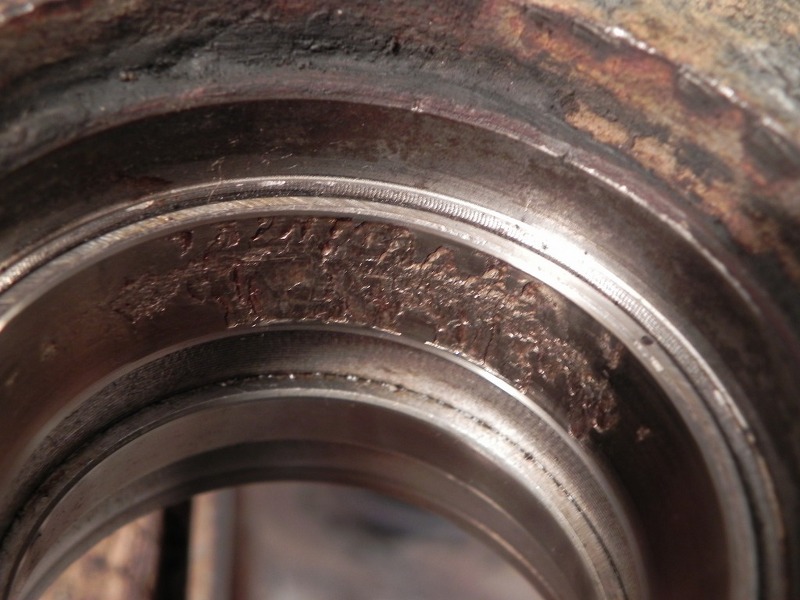
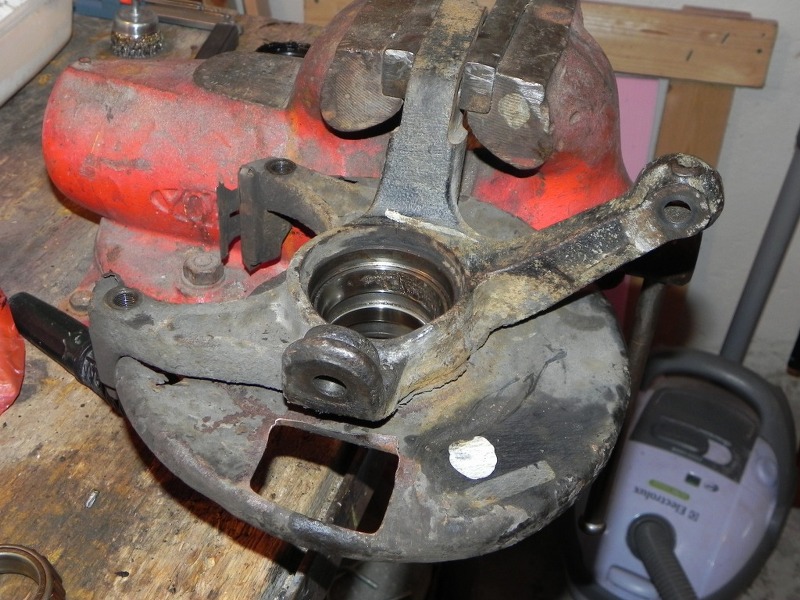
If you would be so kind and answer a few of my questions:
1 - I have some high-strength liquid metal epoxy on hand and succesfully repaired some heavy scratches on bike fork, right where the bushings slide. Do you think it would be possible to repair the pitted surface? (Of course it probably won't last 10000+ miles, but at least few thousand would be nice.)
2 - It is quite hard to find a replacement knuckle here (Slovakia). I've found one seller on UK eBay, but he is not willing to send it to Slovakia and I can't contact him via eBay Messages (he disabled it :/). Also, the shipping cost would probably be quite massive. However, I've found some threads (one of them) where it is mentioned, that it is possible to use parts from other models ("wishbones and spindle-knuckle (?) from K11, hubs from Sunny.") So, the question is - is it possible to use knuckle from K11 or Sunny (non-ABS of course)? They look quite similar on pictures. What about other models? What about combinations (need to replace knuckle+hub+wishbone etc...)
Thanks a lot

